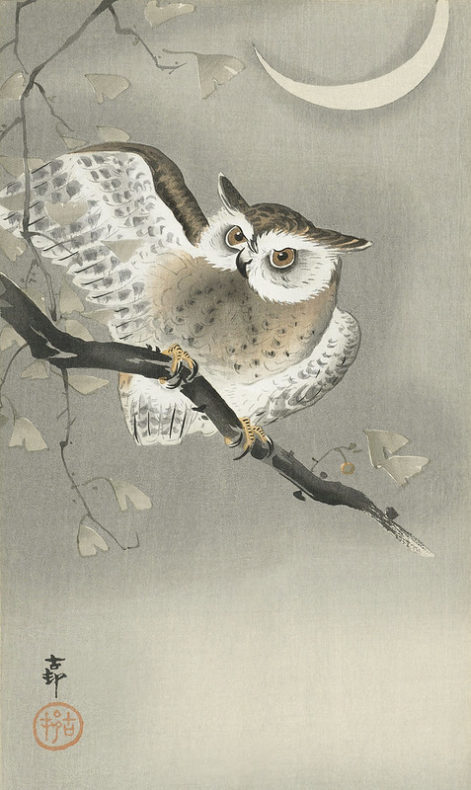
We have been going out to see the comet—to try to see the comet, that is—almost every night for the past week. I read articles to figure out where to find it, beneath the Big Dipper after sunset. Most of the articles call it a once-in-a-lifetime experience, and it’s true. Comet NEOWISE won’t be back again for another 6,800 years.
On Tuesday night, when I was starting to think about going outside again, the dishwasher was making a strange, lonesome sound. Our appliances always tend to quit during a sea change in the world around them. Each time I had a baby, something broke while I was right in the middle of labor. With the first baby’s birth, the tub backed up. The second time, it was the washer. Six years ago the toilet overflowed and the heater stopped working. Losing the dishwasher during a pandemic seemed to follow the same pattern. In some ways, these months have felt not unlike labor—there is quiet, exhaustion, determination, utter vulnerability, along with the hope that new life will be waiting on the other side, although it seems impossible to get there.
I stopped the dishwasher and pulled open the door. Full of dishes that looked like they were getting cleaner. No stuck spoon in the mechanism. I closed the door and turned it back on, and it hummed along as usual.
Still, that lonesome sound was coming from somewhere. Do comets make a sound as they pass by? I went outside. I couldn’t see the comet. Everything was quiet. And then it wasn’t. One long low hoot, coming from the avocado tree of our neighbor to the south. Then another hoot, this one from the neighbor on our other side.
Owls. Owls! Hoot is the right word for the sound, and yet it’s not enough. I checked how other languages describe the owl’s call. In Armenian, the sound is boo boo. In Russian, ugu, or ukhu. In Welsh, go-go-go. All of these seem right, and yet there’s more. An owl’s call is a foghorn blown across a bottle top, it’s the whistle of a train in an alternate universe, the sound of crying when you’ve run out of tears. It’s opening a door that could have used new hinges three months ago, it’s a trumpet’s lowest note played in a subway station. To the owl, the sound is none of these things: it’s the sound that it makes. It may be setting up the boundaries of its territory, scaring off predators, calling to a mate.
Still, the sound got lodged under my ribs and vibrated there. My oldest son came outside to check on the comet and instead we listened to the owls. We sasw what we imagined was a pale, owlish blur on top of our neighbor’s palm tree, to the left of the Big Dipper.
After my son went to bed, I woke up my husband and convinced him to come outside. At first everything was silent. He blinked at me. Then a single hoot, again from the palm tree. “Wow,” he said, now fully awake. Who knew where the other owl went—we never heard it again.
When I dropped my youngest son off at his daycare the next day, I asked the woman who runs the place if she heard the owl. “Runs the place” is what she does, and yet it’s more than that. Her house, three blocks from ours, is a fairytale cottage, with tree houses and a waterfall and a door in the backyard that opens onto the hedge like the entrance to another world. There are tiny painted designs everywhere that her husband, who died a few years ago, put around the house like Easter eggs. My son has been here for five years, for bean burrito Thursdays and sand cakes and napping hard and deep in the cool darkness like he never does at home. He will leave in a month for kindergarten, if we are agreeing that we can call looking at a teacher and kids you’ve never met on a screen, kindergarten.
“I did hear an owl,” she said, surprised. She woke up after midnight the night before and heard something, but she hadn’t realized what the hoot was, beyond something strange and spooky. It’s the sound of moving on. The sound of change and everything that’s sad about it. Also, it was the sound of an owl, doing what an owl does in the night.
The comet? We still haven’t seen it. It may be once in a lifetime, but there are so many other things that are, too.
*
Long-eared owl in ginkgo, Ohara Koson. Original from the Rikjsmuseum and enhanced by rawpixel.com, via Flickr/Creative Commons license.
Folks interested in observing nesting owls or building nesting sites for them (or other birds) should look at the Cornell lab of ornithology website.
https://nestwatch.org
In fact anybody interested in any bird whatever doing anything should look at the Cornell Lab of Ornithology website. It’s a goldmine. https://www.birds.cornell.edu/home/
Such a beautiful reflection on waiting, and change. Thank you, Cameron!
Thank you so much, Rachel! And Tom and Ann–yes! We used it to identify the owl (long-eared owl) by the call. We think.